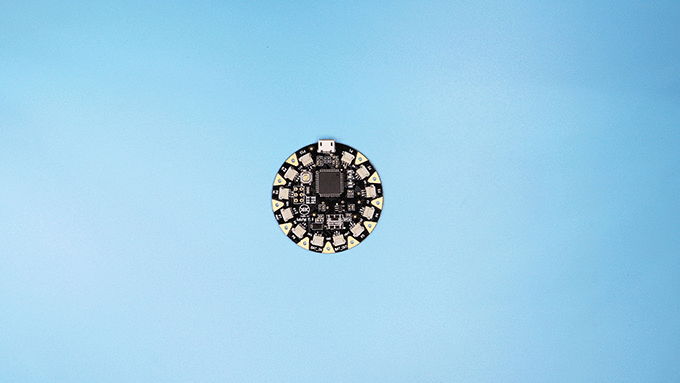Gartner has revealed a list of the top technologies that will unlock the Internet of Things’ full potential in 2017 and 2018.
Fresh on the heels of CES and Mobile World Congress shows, Gartner has compiled a list of the top 10 Internet of Things technologies that should be on every company’s radar over the next two years. Among the key takeaways include security, device management and low-power, short-range networks. According to the firm, this handful of principles will have a broad impact on organizations, affecting everything from business strategy and risk management to a wide range of technical areas such as architecture and network design.

So without further ado, Gartner’s top 10 IoT technologies for 2017 and 2018 are:
IoT Security
The IoT introduces a wide range of new security risks and challenges to the IoT devices themselves, their platforms and operating systems, their communications, and even the systems to which they’re connected. Security will be required to protect IoT devices and platforms from both information attacks and physical tampering, to encrypt their communications, and to address new challenges such as impersonating ‘things’ or denial-of-sleep attacks that drain batteries. IoT security will be complicated by the fact that many ‘things’ use simple processors and operating systems that may not support sophisticated security approaches.
IoT Analytics
IoT business models will exploit the information collected by ‘things’ in many ways, whether that’s understanding customer behavior, delivering services, or improving products. However, IoT demands new analytic approaches. These tools and algorithms are necessary now, but as data volumes increase through 2021, the needs of the IoT may diverge further from traditional analytics.
IoT Device (Thing) Management
Long-lived nontrivial ‘things’ will require management and monitoring. This includes device monitoring, firmware and software updates, diagnostics, crash analysis and reporting, physical management, and security management. The IoT also brings new problems of scale to the management task. Tools must be capable of managing and monitoring thousands and perhaps even millions of devices.
Low-Power, Short-Range IoT Networks
Selecting a wireless network for an IoT device involves balancing many conflicting requirements, such as range, battery life, bandwidth, density, endpoint cost and operational cost. Low-power, short-range networks will dominate wireless IoT connectivity through 2025, far outnumbering connections using wide-area IoT networks. However, commercial and technical trade-offs mean that many solutions will coexist, with no single dominant winner and clusters emerging around certain technologies, applications and vendor ecosystems.
Low-Power, Wide-Area Networks
Traditional cellular networks don’t deliver a good combination of technical features and operational cost for those IoT applications that need wide-area coverage combined with relatively low bandwidth, good battery life, low hardware and operating cost, and high connection density. The long-term goal of a wide-area IoT network is to deliver data rates from hundreds of bits per second (bps) to tens of kilobits per second (kbps) with nationwide coverage, a battery life of up to 10 years, an endpoint hardware cost of around $5, and support for hundreds of thousands of devices connected to a base station or its equivalent. The first low-power wide-area networks (LPWANs) were based on proprietary technologies, but in the long term emerging standards such as Narrowband IoT (NB-IoT) will likely dominate this space.
IoT Processors
The processors and architectures used by IoT devices define many of their capabilities, such as whether they are capable of strong security and encryption, power consumption, whether they are sophisticated enough to support an operating system, updatable firmware, and embedded device management agents. As with all hardware design, there are complex trade-offs between features, hardware cost, software cost, software upgradability and so on. As a result, understanding the implications of processor choices will demand deep technical skills.
IoT Operating Systems
Traditional operating systems such as Windows and iOS were not designed for IoT applications. They consume too much power, need fast processors, and in some cases, lack features such as guaranteed real-time response. They also have too large a memory footprint for small devices and may not support the chips that IoT developers use. Consequently, a wide range of IoT-specific operating systems has been developed to suit many different hardware footprints and feature needs.
Event Stream Processing
Some IoT applications will generate extremely high data rates that must be analyzed in real time. Systems creating tens of thousands of events per second are common, and millions of events per second can occur in some telecom and telemetry situations. To address such requirements, distributed stream computing platforms (DSCPs) have emerged. They typically use parallel architectures to process very high-rate data streams to perform tasks such as real-time analytics and pattern identification.
IoT Platforms
IoT platforms bundle many of the infrastructure components of an IoT system into a single product. The services provided by such platforms fall into three main categories:
- Low-level device control and operations such as communications, device monitoring and management, security, and firmware updates
- IoT data acquisition, transformation and management
- IoT application development, including event-driven logic, application programming, visualization, analytics and adapters to connect to enterprise systems
IoT Standards and Ecosystems
Although ecosystems and standards aren’t precisely technologies, most eventually materialize as APIs. Standards and their associated APIs will be essential because IoT devices will need to interoperate and communicate, and many IoT business models will rely on sharing data between multiple devices and organizations.
Many IoT ecosystems will emerge, and commercial and technical battles between these ecosystems will dominate areas such as the smart home, the smart city and healthcare. Organizations creating products may have to develop variants to support multiple standards or ecosystems and be prepared to update products during their life span as the standards evolve and new standards and related APIs emerge.
Interested in reading more? You can find a more detailed version of Gartner’s analysis here.













































